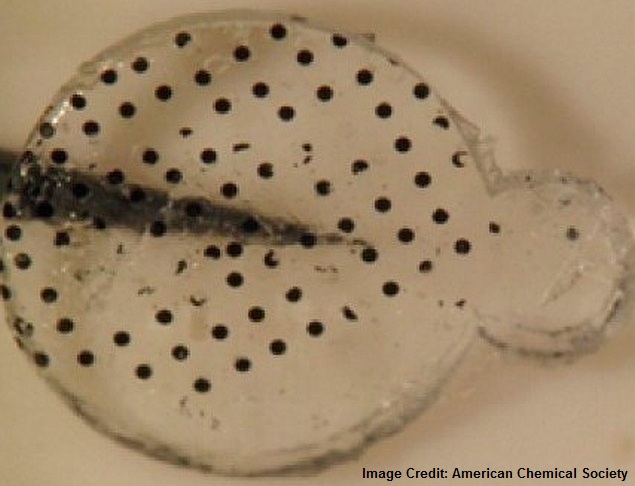- Home
- Science
- Science News
- Scientists Create Artificial Retina That May Help Restore Vision
Scientists Create Artificial Retina That May Help Restore Vision

A team of researchers has created a wireless and light-sensitive, flexible film that could potentially substitute a damaged retina.
The team from Tel Aviv University, the Hebrew University of Jerusalem' Center for Nanoscience and Nanotechnology and Newcastle University in Britain, tested it with a chick retina that normally does not respond to light.
They found that the film absorbed light and, in response, sparked neuronal activity.
In comparison with other technologies, the researchers concluded theirs is more durable, flexible and efficient, as well as better able to stimulate neurons.
"Patients with one type of eye disorder called age-related macular degeneration (AMD) could potentially benefit from such a device," said Yael Hanein from the Tel Aviv University in Israel.
AMD usually affects elderly people, who have damage to a specific part of the retina, thereby limiting their vision.
Scientists have been trying different approaches to develop an implant that can "see" light and send visual signals to a person's brain, countering the effects of AMD and related vision disorders.
But the attempts so far have involved metallic parts and cumbersome wiring, and have low resolution.
"The new technology uses semi-conductor nanorods and carbon nanotubes which are safe," the authors concluded in a paper that appeared in the ACS journal Nano Letters.
Catch the latest from the Consumer Electronics Show on Gadgets 360, at our CES 2026 hub.
Related Stories
- Samsung Galaxy Unpacked 2025
- ChatGPT
- Redmi Note 14 Pro+
- iPhone 16
- Apple Vision Pro
- Oneplus 12
- OnePlus Nord CE 3 Lite 5G
- iPhone 13
- Xiaomi 14 Pro
- Oppo Find N3
- Tecno Spark Go (2023)
- Realme V30
- Best Phones Under 25000
- Samsung Galaxy S24 Series
- Cryptocurrency
- iQoo 12
- Samsung Galaxy S24 Ultra
- Giottus
- Samsung Galaxy Z Flip 5
- Apple 'Scary Fast'
- Housefull 5
- GoPro Hero 12 Black Review
- Invincible Season 2
- JioGlass
- HD Ready TV
- Laptop Under 50000
- Smartwatch Under 10000
- Latest Mobile Phones
- Compare Phones
- OPPO Reno 15 Pro Max
- Honor Win RT
- Honor Win
- Xiaomi 17 Ultra Leica Edition
- Xiaomi 17 Ultra
- Huawei Nova 15
- Huawei Nova 15 Pro
- Huawei Nova 15 Ultra
- Asus ProArt P16
- MacBook Pro 14-inch (M5, 2025)
- OPPO Pad Air 5
- Huawei MatePad 11.5 (2026)
- Xiaomi Watch 5
- Huawei Watch 10th Anniversary Edition
- Acerpure Nitro Z Series 100-inch QLED TV
- Samsung 43 Inch LED Ultra HD (4K) Smart TV (UA43UE81AFULXL)
- Asus ROG Ally
- Nintendo Switch Lite
- Haier 1.6 Ton 5 Star Inverter Split AC (HSU19G-MZAID5BN-INV)
- Haier 1.6 Ton 5 Star Inverter Split AC (HSU19G-MZAIM5BN-INV)

















